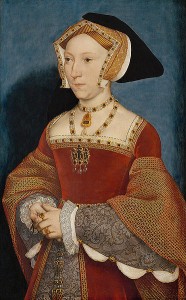 On 14th May 1536, King Henry VIII sent Sir Nicholas Carew to collect Jane Seymour from Carew’s country home, where Jane had been sent previously to prevent gossip about her relationship with the King. Carew’s instructions were to bring her to a property in Chelsea, which was within a mile of the King’s lodgings.
On 14th May 1536, King Henry VIII sent Sir Nicholas Carew to collect Jane Seymour from Carew’s country home, where Jane had been sent previously to prevent gossip about her relationship with the King. Carew’s instructions were to bring her to a property in Chelsea, which was within a mile of the King’s lodgings.
According to Eustace Chapuys, the imperial ambassador, from then on Jane Seymour was “most richly dressed” and “splendidly served by the King’s cook and other officers”. Queen Anne Boleyn’s household had been broken up and four of the men accused of adultery with her and of conspiring to kill the King with her had been found guilty of high treason, so the King obviously felt that it was safe to bring his relationship with Jane out into the open and to start treating her as the queen-in-waiting she was.
Chapuys was not greatly impressed by Jane Seymour. In a letter to Antoine Perrenot, on 18th May 1536, he wrote that she was twenty-five years of age and “of middle stature and no great beauty, so fair that one would call her rather pale than otherwise”. He also said that she was inclined “to be proud and haughty”, that he doubted that she was a virgin, and that she was “not a woman of great wit”. However, she did bear “great love and reverence to the Princess [Mary]”, so couldn’t be too bad.
Also on this day in 1536, Thomas Cromwell wrote to Stephen Gardiner and Sir John Wallop, Henry VIII’s ambassadors at the French court, to update them on the situation in London. In his letter, he wrote of “The Queen’s incontinent living” which “was so rank and common that the ladies of her privy chamber could not conceal it”. Click here to read the full letter.
Notes and Letters
- Letters and Papers, Foreign and Domestic, Henry VIII, Volume 10 – January-June 1536, 908.
- Ibid., 901.